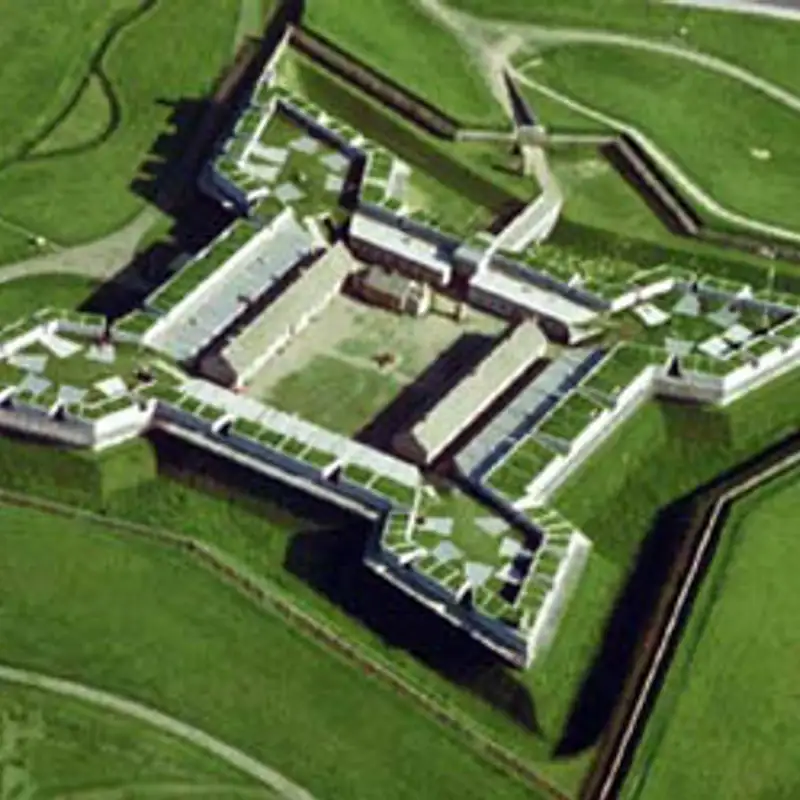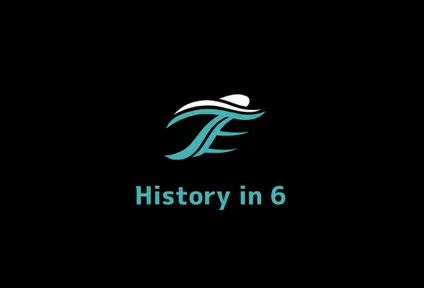The Siege Fort Stanwix Begins
The summer sun of 1777 saw a continent ablaze with revolution. The fight for American independence, declared just a year prior, seemed precarious. From London, the British Crown hatched a bold strategy intended to sever the rebellious American colonies and extinguish the flames of liberty.1 The plan aimed to seize control of New York's vital Hudson River Valley, effectively isolating the stubborn heart of the rebellion in New England from the colonies to the south.1
This strategy envisioned a three-pronged pincer movement converging on Albany. Lieutenant General John Burgoyne (ber-GOYN) lead the main army south from Canada down Lake Champlain and the Hudson River.2 General Sir William Howe, commanding the main British forces in America, was expected to drive north from New York City.1 Crucially, a third, smaller expedition under Lieutenant Colonel Barry St. Leger (SIL-in-jer) would strike east from Lake Ontario, pushing through the fertile Mohawk River Valley to join the others at Albany.1
You see, the Mohawk Valley was more than just a path to Albany. It was a rich agricultural land. It was the ancestral home of the powerful Six Nations of the Iroquois Confederacy. And it was a critical artery for trade and travel.14 At the valley's western edge lay a strategic choke point known for centuries as the "Great Carrying Place," or officially known as the Oneida (oh-NYE-duh) Carrying Place.10 This short portage, varying from two to six miles depending on water levels, was the land bridge connecting the Mohawk River with wood creek. The Mohawk river flowed southeast towards the Hudson while Wood Creek snaked northwest through swamps and streams eventually reaching Lake Ontario and the Great Lakes.14 To control this portage was to control movement between the Atlantic coast and the continental interior.
Standing sentinel over this critical portage was Fort Stanwix. Ironically, it was the British themselves who had built this bastion fort of earth and timber back in 1758, during the French and Indian War. It was built to secure the region against French encroachment.10 But after the French defeat, the fort was abandoned and allowed to decay, its timbers rotting, its earthen walls eroding.1 Now, in the summer of 1777, as St. Leger's (SIL-in-jer)’s expedition marched east, this forgotten, dilapidated outpost suddenly became one of the linchpins of the entire British northern campaign.10 It stood as the solitary obstacle blocking the British western advance toward Albany.
The threat looming from the west did not go unnoticed by American commanders. Major General Philip Schuyler (SKY-ler), head of the Continental Army's Northern Department, understood the strategic imperative of holding the Oneida Carrying Place.6 Recognizing the danger posed by the British incursion from Canada. He dispatched the 3rd New York Regiment under Colonel Peter Gansevoort (GANZ-vort) with orders to reoccupy and, crucially, rebuild the derelict Fort Stanwix in April of 1777.6
When (GANZ-vort) arrived at the site in May 1777, he found Fort Stanwix in a deplorable state – essentially it was a ruin as its defenses had crumbled.1 The task ahead was monumental. Throughout the late spring and summer, the soldiers toiled relentlessly. This garrison of roughly 550-600 men raced against time, frantically clearing ditches, felling timber, raising walls, and struggling to make the fort capable of withstanding an attack.20 Their work was a struggle. They had engineering challenges. The troops were not experienced in raising fortifications. They were harassed by raids from enemy parties.19 The urgency intensified in mid-July as warnings from friendly Oneida scouts confirmed the rumors: a large British force was indeed marching east, heading directly for them.10
This frantic effort to rebuild the fort even as the enemy drew closer underscored the precarious American position on the frontier. Had Schuyler (SKY-ler) not acted when he did, or had Gansevoort (GANZ-vort) faltered in their monumental task, St. Leger (SIL-in-jer) might have found an easy passage east. The defense of Fort Stanwix was, quite literally, being constructed log by log, in the face of imminent invasion.
On The British side, the man tasked with leading this western prong of Burgoyne's (ber-GOYN) offensive was Lieutenant Colonel Barry St. Leger(SIL-in-jer) . An officer with experience in North America during the French and Indian War, St. Leger(SIL-in-jer) was chosen to lead what Burgoyne (ber-GOYN) envisioned as a diversionary force to distract the Americans.35 St. Leger (SIL-in-jer) assembled his command at Oswego (os-WEE-go) on Lake Ontario.
His army was a patchwork of loyalties and origins. The core of European soldiery was small: only about 100 British regulars plus a company of roughly 80 to 90 Hessian Jägers. The Jaegers were skilled riflemen who acted as scouts and sharpshooters for the army.2 Far more numerous were the Loyalists, American colonists who remained loyal to the King. They numbered from 150 to 350 men.2 Many of these men were former residents of the Mohawk Valley, driven from their homes by the Revolution. They were returning with British arms to reclaim their property and punish their Patriot neighbors.12 Also present were a small contingent of about 50 to 200 Canadian militia and laborers providing logistical support to the endeavor.2
The largest single component of St. Leger's(SIL-in-jer) force, and the one upon which British strategy heavily relied, was the contingent of Indian allies ranging from 700 to 1,000 warriors.2 These warriors came primarily from four of the Six Nations of the Iroquois Confederacy: the Mohawk, Seneca, Cayuga (kī-YOO-guh), and Onondaga (on-un-DAH-guh). They were led by influential war chiefs: Mohawk leader Joseph Brant (Thayendanegea), and the Seneca leaders Sayenqueraghta(sy-en-kwuh-RAHG-tuh) and Cornplanter.9 Additionally Warriors from Great Lakes tribes and the Mississaugas (mis-uh-SAW-guhs) also joined the expedition.9 Coordinating with these diverse Indian groups were about 100 rangers from the British Indian Department. The total size of St Leger’s (SIL-in-jer) force was somewhere between 1600 to 1900 men.
St. Leger's(SIL-in-jer) objective was clear: take Fort Stanwix, pacify the Mohawk Valley, rally more Loyalists to the Crown, and then march downriver to Albany to rendezvous with Burgoyne (ber-GOYN) and Howe, completing the strategic encirclement of New England.2
However, a critical complication lay within the Indigenous component of his force. The Six Nations of the Iroquois Confederacy, a powerful political entity that had long navigated the complex geopolitics between European powers, was divided by the Revolution.9 The British were able to leverage past alliances and promises of protection against colonial encroachment to recruit the Mohawk, Seneca, Cayuga (kī-YOO-guh), and Onongoga(on-un-DAH-guh) nations. But they were unable to win over the entire Confederacy. The Oneida and Tuscarora(tus-kuh-RAW-ruh) nations, geographically closest to the encroaching settlements chose to align themselves with the American cause.18 This internal split not only deprived St. Leger (SIL-in-jer)of universal Iroquois support but also provided the Americans with invaluable allies who served as scouts, messengers, and warriors for their side.
This complex coalition under St. Leger(SIL-in-jer), while formidable on paper, carried inherent weaknesses. The motivations of its various forces varied widely – regulars sought victory for the Crown, Loyalists sought revenge and restoration, Indians sought to protect their lands and traditional ways.. and for the plunder. St. Leger(SIL-in-jer) himself, though experienced, lacked deep understanding or trust of his Indian and Loyalist allies, and had never commanded such a diverse force.12 This fragility became a source of discord and mistrust between the different groups as the expedition marched towards the Oneida Carrying Place. This frailty would prove critically important when the campaign faced its first serious setback. But regardless, onward they came.
The British advance guard led by Lieutenant Henry Bird, reached the outskirts of Fort Stanwix on August 2nd.20 Their mission was to cut the fort's communication lines and, crucially, intercept a final American supply convoy known to be heading up the Mohawk River.20 Unfortunately for them, they arrived too late. The convoy of bateaux, laden with provisions and escorted by 200 men of the 9th Massachusetts Regiment, had just reached the fort and unloaded its precious cargo.26
St. Leger's (SIL-in-jer)’s main force arrived the following day, August 3rd.10 He immediately attempted psychological warfare. His troops, including Mohawk warriors adorned in intimidating war paint, paraded in full view of the ramparts.10 St. Leger (SIL-in-jer) then dispatched Captain Gilbert Tice under a flag of truce, carrying a proclamation demanding surrender.20 Colonel Gansevoort's (GANZ-vort) response was swift and unequivocal. The demand "was rejected with disdain".31 Gansevoort (GANZ-vort) himself sent a written reply to St. Leger (SIL-in-jer), famously declaring his "determined resolution...to defend this fort and garrison to the last extremity...".20
The besiegers began establishing their positions. The British regulars and artillery set up camp about half a mile northeast of the fort.10 The Loyalists and the bulk of the Indian forces occupied the area between the upper and lower landings on the Mohawk River, south and east of the fort.10 Meanwhile, work parties of Canadians and rangers struggled to clear Wood Creek and the Oneida Carry, which Gansevoort's (GANZ-vort) men had diligently obstructed by felling countless trees – a tactic that significantly delayed the arrival and deployment of St. Leger (SIL-in-jer)'s artillery.20
When the British guns – two small 6-pounders, two 3-pounders, and four small mortars – were finally brought into position, their inadequacy became immediately apparent.19 St. Leger (SIL-in-jer), operating under faulty intelligence that the fort was still ruinous, had not brought heavy siege cannons capable of breaching the newly repaired earth and timber walls.19 The light field pieces failed to dent the seventeen-foot-high earthen ramparts. , protected further by a ditch and stockade.35
The mortar shells, intended to lob explosives down into the fort, were too small to cause significant damage or start major fires.35 The bombardment was so ineffective that Indian observers were said to have mockingly compared it to "Apples that Children were throwing over a Garden Fence".35
During these opening days, the siege settled into a pattern of harassment and preparation. Hessian Jägers and Indian marksmen took positions in the surrounding woods, sniping at any defender who showed himself on the walls, inflicting occasional casualties.31 Both sides sent out parties to secure resources like hay from nearby fields or to burn buildings that might offer cover to the enemy.31
From the outset, the siege was marked by St. Leger (SIL-in-jer)'s miscalculations. First and foremost about the fort's condition. He also failed to take into account the garrison's resolve and the artillery needed for the task. Gansevoort's(GANZ-vort) immediate and defiant refusal to surrender, coupled with the demonstrable weakness of the British bombardment, established a crucial dynamic. Unable to breach the walls by force, St. Leger (SIL-in-jer) was forced into a waiting game, hoping to starve the garrison out or break their will through intimidation and the prevention of relief. Time, however, was a luxury the British’s bold campaign could ill afford.

